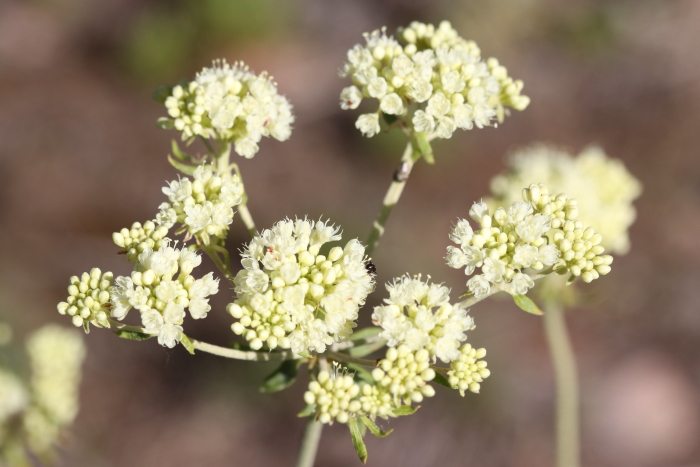Parsnipflower Buckwheat
(Eriogonum heracleoides)
Parsnipflower Buckwheat (Eriogonum heracleoides)
/
/

Andrey Zharkikh
CC BY 2.0
















































Estimated Native Range
Summary
Parsnipflower Buckwheat is valued for its drought tolerance and ability to attract wildlife, including butterflies, bees, and birds. It is particularly important as a host plant for several species of butterflies native to the Palouse region. This plant is well-suited for naturalistic plantings, rock gardens, and xeriscaping due to its low water requirements and preference for well-drained soils. It thrives in full sun and is an excellent choice for gardeners looking to create a habitat for pollinators or to add a touch of wild beauty to their landscape. While generally low-maintenance, it can be susceptible to root rot if overwatered or planted in poorly drained soils.CC BY-SA 4.0
Plant Description
- Plant Type: Subshrub, Shrub, Herb
- Height: 0.5-1 feet
- Width: 1-3 feet
- Growth Rate: Slow
- Flower Color: Yellow
- Flowering Season: Summer, Fall
- Leaf Retention: Semi-Deciduous
Growth Requirements
- Sun: Full Sun
- Water: Low
- Drainage: Fast
Common Uses
Bank Stabilization, Bee Garden, Bird Garden, Border Plant, Butterfly Garden, Deer Resistant, Drought Tolerant, Erosion Control, Fire Resistant, Fragrant, Hummingbird Garden, Low Maintenance, Potted Plant, Rock Garden, Salt Tolerant, Street Planting
Natural Habitat
Open woodlands, grasslands, and alpine areas in the Western United States
Other Names
Common Names: Whorled Buckwheat, Wyeth Buckwheat, Wyeth’s Eriogonum, Sulphur-Flower Buckwheat, Parsnipflower Buckwheat, Wyeth’s Buckwheat, Parsnip-Flowered Buckwheat, Parsnip-Flowered Wild Buckwheat, Ériogone Fausse-Berce
Scientific Names: , Eriogonum heracleoides, Eriogonum angustifolium, Eriogonum heracleoides var. angustifolium, Eriogonum heracleoides var. minus, Eriogonum heracleoides subsp. angustifolium, Eriogonum heracleoides var. multiceps, Eriogonum heracleoides var. rydbergii, Eriogonum heracleoides var. micranthum, Eriogonum gyrophyllum
GBIF Accepted Name: Eriogonum heracleoides Nutt.